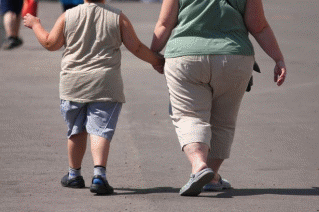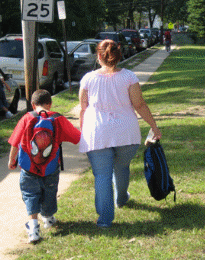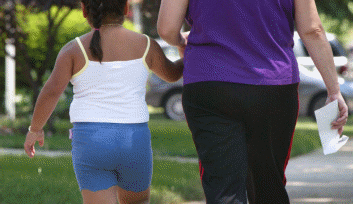Introduction
The current windshield survey presents an observation of the Newark community. It includes the general introduction, windshield survey findings, definition of the vulnerable population and its problem, the determinants of the vulnerable status of the population group, and the opportunities that the community provides for this population. The conclusions to the survey are grounded on the nursing assessment of the community.
Introduction to the Community
This windshield survey was conducted in Newark, New Jersey. Newark is the seat of Essex County and one of the most populous municipalities in the country. As of 2016, its population was 281,764 people (“Annual Estimates of the resident population,” 2016). Newark is a growing city. In recent decades, its population of the city has observed an increase of 2.6% (“Newark, New Jersey,” n.d.). The community of Newark can be considered young.
The average age of its citizens is 34.6 while the median age in the state, in general, is higher. There is no gender disproportion in the community with 49% of men and 51% of women. The average household income is only $30,966 while the average figure in New Jersey is $72,222 (“Newark, New Jersey,” n.d.). Despite some industries and manufacturing in the community, Newark has a high poverty rate. It is almost twice higher than the average around the United States and is estimated at 29%.
The distribution of income is not equal among the ethnic groups that constitute the population of Newark. Thus, the surveys reveal that Asians of Newark have the highest salaries while African Americans belong to the poorest population in Newark with lower wages. Although the city of Newark has some attractions such as the Newark Museum, Prudential Center, or some festivals, it is not very popular among local or foreign tourists.
Photographs of the Community Evidencing Observations
Many US communities have similar social or economic problems. One of the concerns raising in Newark is childhood obesity. The observation shows that the problem is burning already for pre-kindergarten children. The hypothesis of this survey is that the obesity problem is threatening children from low-income families.




Windshield Survey Findings
Thus, the population observed in this Windshield Survey includes children from low-income families. The survey findings demonstrate that there are many overweight and obese pre-kindergarten children in the streets of Newark. Moreover, it can be stated that these children are from low-income families. These children are rarely found in sports or playgrounds. In most of the cases, they are walking somewhere with their parents who are frequently obese as well.
Description and Demographics of the Vulnerable Population
As of 2013, there were about 70,000 children in Newark (2015 Newark kids count, 2015). The children population of Newark is mainly African American and Hispanic. The vulnerable population for this windshield survey comprises pre-kindergarten children with obesity from low-income families. On the whole, the problem of obesity is critical for Newark. The rates of obese and overweight children from 3 to 5 years old are more than two times higher in the community under the survey that the average in the United States.
Thus, there are 45% of obese and overweight 3-5-year-olds in Newark compared to 21% in the United States (New Jersey childhood obesity survey, n.d.). Gender prevalence of obesity is not significant for Newark, 44% of boys and 45% of girls are obese or overweight in Newark. There is also a problem with parents’ perception of their children. The Childhood Obesity Survey shows that parents do not notice or acknowledge the problems of their children. Thus, only 5% of parents whose children are 3-5 years old consider their children obese and 10% believe their children are slightly overweight (New Jersey childhood obesity survey, n.d.).
Social Determinants of the Vulnerable Status
There are some reasons for low-income obese children to be a vulnerable population. As pf 2015, there were 71% of Newark children living in low-income families (2015 Newark kids count, 2015). At the same time, in New Jersey, this percentage was 33 and in Essex County – 44%. In 2013, the federal low-income level for a family of four people was estimated at $47,100. Nevertheless, most Newark families have less.
For example, in 2011 the median income of families with children in Newark was 29,161 compared to 81,983 in New Jersey (2015 Newark kids count, 2015). This amount decreased to 27,168 in 2013 while the average income around the state of New Jersey increased and was 85,248. Although the number of low-income families increased, the number of children living in poverty decreased from 23% in 2012 to 20% in 2013 (2015 Newark kids count, 2015). Another negative factor influencing the quality of life of Newark families is the unemployment rate. Despite the fact that it decreased from 15.4% in 2010 to 10.2% in 2014, it is still among the highest in New Jersey and almost twice higher than the statewide rate of 5.9%.
Low income leads to problems with nutrition that cause overweight and obesity. Thus, the Center for Disease Control revealed that more than 30% of children were considered overweight or obese, and this figure was even higher among low-income populations (Needs and segmentation analysis, n.d.). The research proves that children in Newark do not get enough vegetables. Thus, only 19% of children had vegetables three or more times a day as it is recommended.
Moreover, the majority of the youngest children aged 3-5 (91%) get less than three vegetables a day. Although children do not get enough nutritious elements with food, 16% of 3-5-year-olds visit fast-food and 18% drink two and more sugar-sweetened beverages two or more times a week (New Jersey childhood obesity survey, n.d.). Another factor influencing the obesity rate is the lack of physical activity. It is accepted that children should spend at least 60 minutes a day involved in some type of physical activity but most of the Newark children do not follow this recommendation. Still, the major problem is not poverty or low income and related bad nutrition.
The concern that should be addressed is that the majority of parents do not recognize their children are overweight or obese. Moreover, parents believe their children eat healthily and do not have weight-related problems.
Opportunities for the Community Assistance
The problem of obesity among children from low-income families needs a solution before these children get obesity-related diseases such as type 2 diabetes, metabolic syndrome, or heart problems. The community has some efficient mechanisms and can develop more for managing and preventing the problem of childhood obesity. for example, the poverty and low-income concern is partially addressed through tax credits that can be received by working families from both the state and the federal governments.
Newark government has a department of health and community wellness that also provides interventions aimed at the reduction of obesity rates among children. One of the interventions accepted throughout the country is the support of breastfeeding that is likely to reduce child overweight and obesity (New Jersey state nutrition, physical activity, and obesity profile, 2012). Some actions are also taken by community schools.
Thus, over 70% of schools in New Jersey prohibited the advertising of fast food, soft drinks, and other components of unhealthy eating. Finally, the community attempts to strengthen the relations between educational, academic, political, corporate, and nonprofit organizations to unite their efforts in addressing the problem of childhood obesity in low-income families (Anyaoku, 2014).
Conclusions
On the whole, the problem of pre-kindergarten childhood obesity has both social and economic roots in the Newark community. Children from low-income families constitute a vulnerable population because they do not get proper nutrition and also observe the lack of physical activity. Although the community provides some actions to address the problem, more nursing interventions can be necessary to reduce the epidemics of obesity.
First of all, there is a need for parent education concerning the nutrition of their children. Secondly, the community should assist in the reduction or elimination of unhealthy food advertisements at schools. Also, there is a necessity to provide a plan for the popularization of physical activity for both parents and children. Finally, it is important to provide an examination of overweight children to assess their health condition and give recommendations on food and activity. It can be concluded that the Newark community is on the way to the improvement of the problem related to obesity among children. However, more efficient interventions and cooperation of different organizations can coordinate those actions and lead to a better result.
References
Annual estimates of the resident population: April 1, 2010 to July 1, 2016. (2016). Web.
Anyaoku, N. (2014). Newark’s citywide fight against child obesity: Opinion. Web.
Needs and segmentation analysis for the South Ward of Newark, New Jersey. (n.d.). Web.
New Jersey childhood obesity survey. Chartbook. Newark. (n.d.). Web.
New Jersey state nutrition, physical activity, and obesity profile. (2012). Web.
Newark, New Jersey. (n.d.). Web.
Newark, NJ. (n.d.). Web.
2015 Newark kids count. (2015). Web.